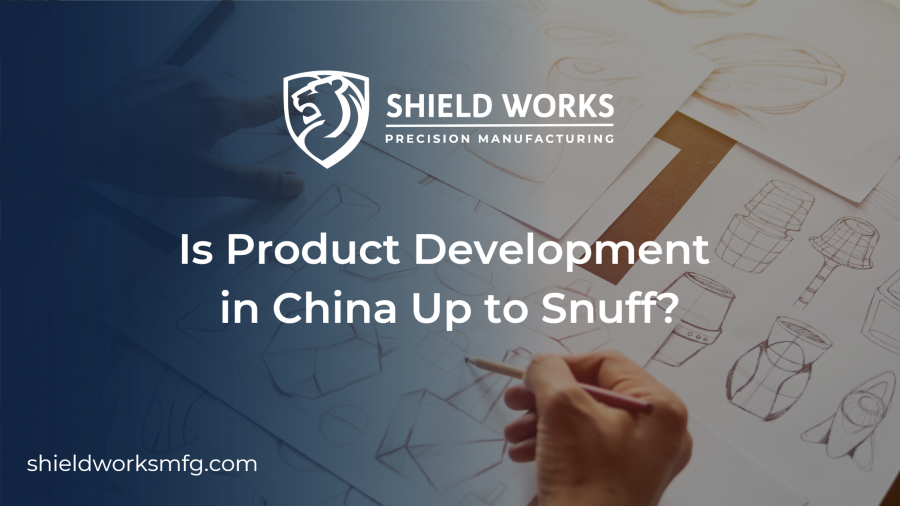Is Product Development in China Up to Snuff?

Product development in China has earned itself a reputation as one of the most innovative nations in the world. But just how good are the products that come out of China? Are they up to snuff? Some business owners find themselves questioning the value of outsourcing their product development needs to China, so let’s take a look at how the country stacks up against others when it comes to producing products that meet global standards.
It is still a good idea to outsource product development to China
The idea of outsourcing product development to China may seem strange to many. Most engineers and product developers assume that manufacturing abroad only applies to sourcing parts from other countries, but there are many advantages to having your invention made in China. Chinese companies, for example, often provide ready-made factories, so you don’t have to worry about setting up the factory space before production begins. The biggest benefit of outsourcing product development is the cost savings. there are generally cheaper manufacturing costs in Asian countries than in Western ones, which allows startups to take risks they otherwise wouldn’t be able to.
With years of development, China is able to produce quality products that meet international standards. Engineers and product developers think outsourcing manufacturing to China is a risky decision, since they are concerned about the quality of the products. American brands are realizing, however, how reliable Chinese companies can be as more use them for their projects.
Get off to a good start
Working with a partner who has impeccable standards and experience is the best way to avoid quality issues in the future. In spite of the numerous problems that can arise when making products abroad, you’ll want someone on your team who can spot these problems before they snowball. Working with an experienced partner will help you avoid major setbacks, whether it’s minor translation errors or hardware problems. Know what aspects of your product or business could cause problems. When unsure of anything regarding your production process, consult an expert or do some research.
For example, if you’re using a new material or technology for your product, it’s critical to know how that material will interact with other components. Whether you’re making a hard drive, an electronic device, or anything else that contains moving parts and circuits, you need someone who knows how these things work together. This can help you avoid quality issues that may arise later during production when pieces are put together in different locations around the world.
How long it takes
From preparing a prototype and testing it, to finding materials and ordering samples, bringing an idea to life can take up to six months on average. Consequently, product development timelines are dependent on various factors such as the creation of a custom mold instead of a mass-produced mold or production in China. This could result in significant changes in the timeline, depending on your design and goal. What will the timeline be for receiving your samples? It will vary based on what type of shipping you select. Ordering standard delivery is good for packages to reach you in two weeks or less; order express shipping and you’ll receive your package in one week.
But with COVID and geopolitics, everything still remains more or less unclear. It’s important to have an adaptable mindset.
How much you should invest prototyping
Getting prototypes made is often a great way to see how your product will look (and feel) and how durable it will be. It’s also worth taking into account the fact that prototypes have varying prices. If you are looking for low-cost prototyping solutions such as 3D printing, get quotes from multiple suppliers. Injection-molded parts can cost hundreds to thousands of dollars. Many manufacturers don’t charge their first-time clients much for printouts if cooperative desire is demonstrated.
It’s also important to consider how many products you will make. If you’re only going for one prototype, that might not be a bad place to start. But if you are trying to test multiple variables or aspects of your product idea, investing in several iterations could make sense. (For example, if you want both male and female feedback on a product before going into production.)
How to make sure you don’t get ripped off
Although you may be hesitant to send money to a company you don’t know, most clients choose to have an agreement in writing before making any payments. The agreement should include timelines for delivery, agreements for delayed shipping and detailed specifications. If you’re worried about your contract being followed to the letter, hire a lawyer who works in this area, or find a partner that has experience making goods in China. That way you can rest assured that there will be no mix-ups, you’ll get exactly what you wanted, and there’ll be less chances for headaches.
If you don’t have time to vet a partner thoroughly before entrusting your project to them, you could run into some problems, but investing your time up front into researching reputable ones will solve the majority of potential issues. From the UK and with a 17-year history in product development, Shield Works definitely understands your language. Give us a call and find out more!
